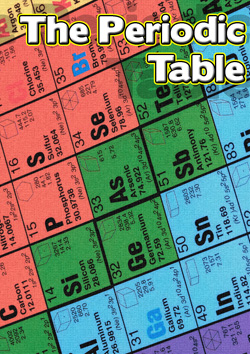 An introduction to The Periodic Table in bits and pieces!
An introduction to The Periodic Table in bits and pieces!
I created some worksheets onto which my son can record his research about a specific element every week. This will also teach him how Bohr diagrams and Lewis Structures work. We will watch the video clips linked to on http://ed.ted.com/periodic-videos.
Here are his instructions (included in the file you can download underneath):
- Fill in the atomic number, atomic mass and the name of the element.
- Determine the number of protons, neutrons, and electrons in an atom of the element
- Identify if the element is a solid, liquid, or gas at room temperature (colour the circle)
- Give the Melting Point and Boiling Point in degrees Celsius
- Write how many valence electrons the element has
- List some physical or chemical properties for the element
- List some uses for the element
- Draw a Bohr diagram to show the arrangement of electrons
- Draw a Lewis Structure to show the number of valence electrons
- Use the following colors to shade in the square for each element:
- Hydrogen = Dark Green
- Poor Metals = Light Green
- Very Reactive Metals = Red
- Metalloids = Raspberry
- Quite Reactive Metals = Light Blue
- Non-metals = Yellow
- Transition Metals = Purple
- Noble Gases = Orange
- On the Periodic table Outline
- Write the symbol for the element in the correct block
- Fill in the atomic number, atomic mass and the name of the element
- Colour the element’s block using the same colour as in #10
- Go to http://www.ptable.com/ for research (or you can visit http://education.jlab.org/itselemental/index.html)
We’re using the Usborne Science Encyclopedia for an introduction to the Periodic Table (pages 28-29), and as introduction to Bohr diagrams and Lewis Structures, we watched this video clip on Youtube:
You can download my Notebooking Pages here:
Element of the week
The Periodic Table Outlines
The Periodic Table Book Cover A4
This forms part of our 6th Grade Curriculum. Download more resources here.






